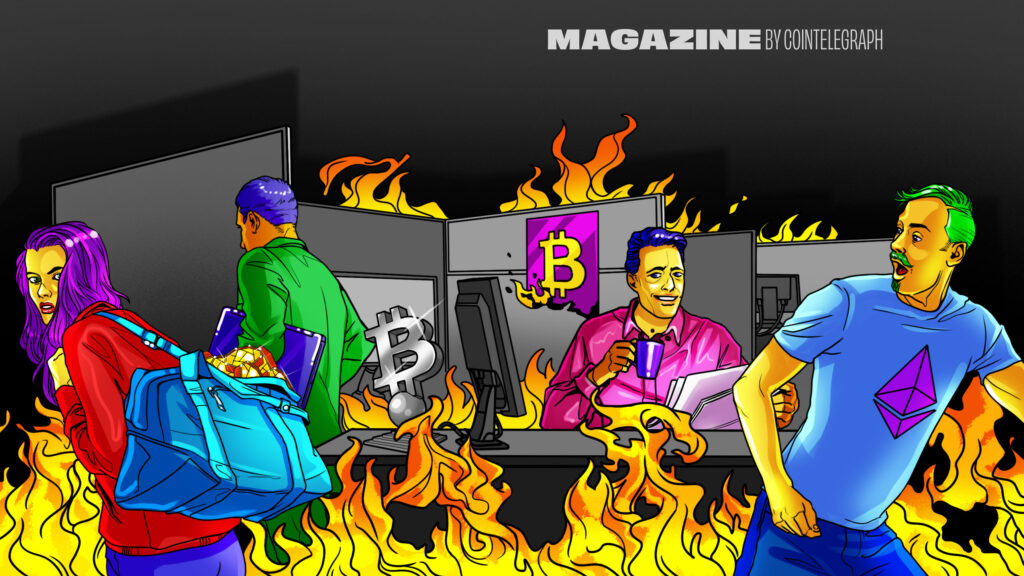Crypto communities can often implode, despite the best intentions of everyone involved. Genuine communities with plausible but convo
Crypto communities can often implode, despite the best intentions of everyone involved.
Genuine communities with plausible but convoluted project ideas can fail just as easily as projects like DeFi Wonderland, which imploded because of its CFO’s connection to the controversial, defunct Canadian exchange QuadrigaCX.
Plausible projects face scaling challenges like Zilliqa or project management problems like Bitcoin Diamond… or simply run out of money like any startup. So, they need a strong and well-coordinated community to ensure they can survive if and when things go wrong.
So, what can be done to help create a healthy community that pulls together to achieve its objectives? Here are some reflections from founders and community managers.
But for starters what even is a crypto “community?”
What even is a crypto community?
“There’s a lot of moving parts to a community. There’s no one way to define a community in crypto,” says Jett Nathan, community organizer for the Perion gaming DAO.
“The types of community have a lot to do with a project. Different crypto initiatives also behave differently whether it be DeFi or NFTs.” As a pro-gaming team, what gels Perion’s DAO together is clear: “members trying to become pro gamers or learning to be programmers.”
Being part of a community is more than transactional. Owning a coin does not make you a community member. Investor communities want their horse to win, so Twitter feedback loops can make project builds opaque and unrealistic. A project needs to create a digestible story for a community to hold dear. However, the needs of a project and the needs of the community may differ.
Within the community, traders and true believers are different, too. Traders are obviously incentivized to be passionate about their holdings, as attracting further investors helps their hip pockets. But true believers genuinely have faith in the story, the mission. So, a community can be a pack of wolves or an altruistic group of saints, depending on the narrative.
Founders and project community managers have to play nice and keep these diverse groups in check.
Community stereotypes
Ivan Fartunov is Aragon’s head of ecosystem. He says, “A community is a community full stop. If you can’t build a good community outside crypto, you can’t build one inside.” Tokens don’t solve every problem, and they won’t hold a community together in a bear market.
“Monetary incentives can also break the social contract. You don’t ask for payment when you invite a friend for dinner. But bull markets mean people do things simply for monetary rewards, and this is a false community that will turn on you as soon as you stop paying.”
For Fartunov, there are three broad categories of crypto communities today, each of which helps and hurts the space in different ways.
Blind idealists
They have a “‘we will change the world’ idealism and excitement, which is helpful in an industry that requires you to hold convictions others will call ‘crazy.’ Some of them tend to be too academic in thinking; others are democracy maxis. But democracy doesn’t always work too well. Usually, academic concepts don’t translate well in this space.” Still, everyone has to be a little bit of an idealist to realistically work in Web3.
Moon bois
Fartunov says unlimited financial upside “is the gateway for the moon bois, and a lot of people enter the space with that mindset.”
Each adoption cycle is driven by moon bois hoping to get rich quickly on the latest upswing: “In 2013, we had the Bitcoin forks — the first wave of shitcoins. Then in 2017–2018, we had initial coin offerings — a lot of white papers and proof-of-concepts and little intent by founders to do much real world applications.”
“Then in 2020–2021, we had DeFi and NFTs – promising interesting applications, but the financial upside is what generated the most interest. Hopefully, some of these people stick around and join one of the other two types of communities.”
Read also
Features
DeFi vs. CeFi: Decentralization for the win?
Features
You don’t need to be angry about NFTs
Pragmatic builders
These are the most useful community members and the ones who actually get stuff done. They’re “pragmatic builders, who have a long-term horizon; they’re looking to build solutions for problems within the industry. They realize ‘the paradigm shift’ is not really just around the corner, and things should first make sense in the Web3 sandbox.”
But keen speculators and builders are not mutually exclusive,…
cointelegraph.com
